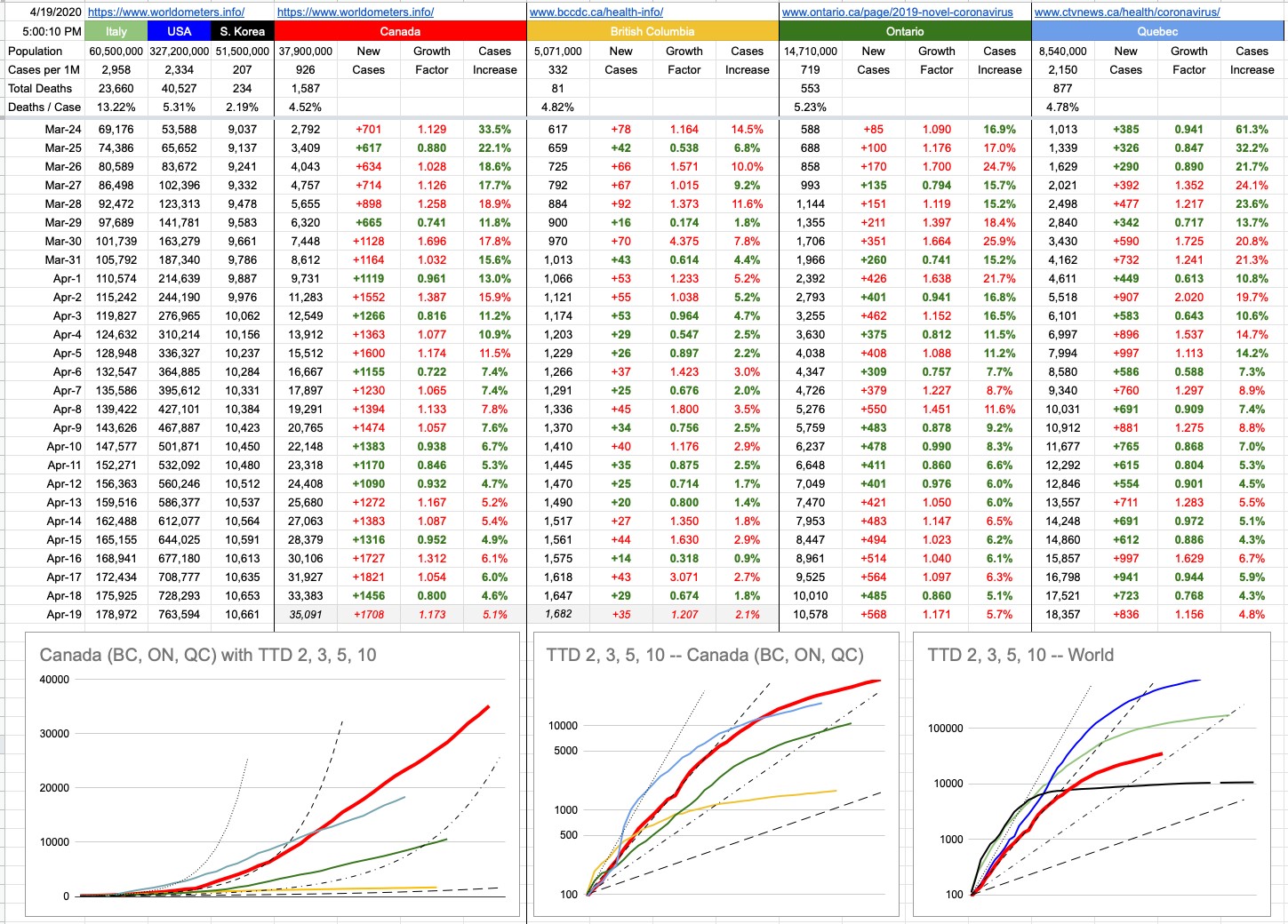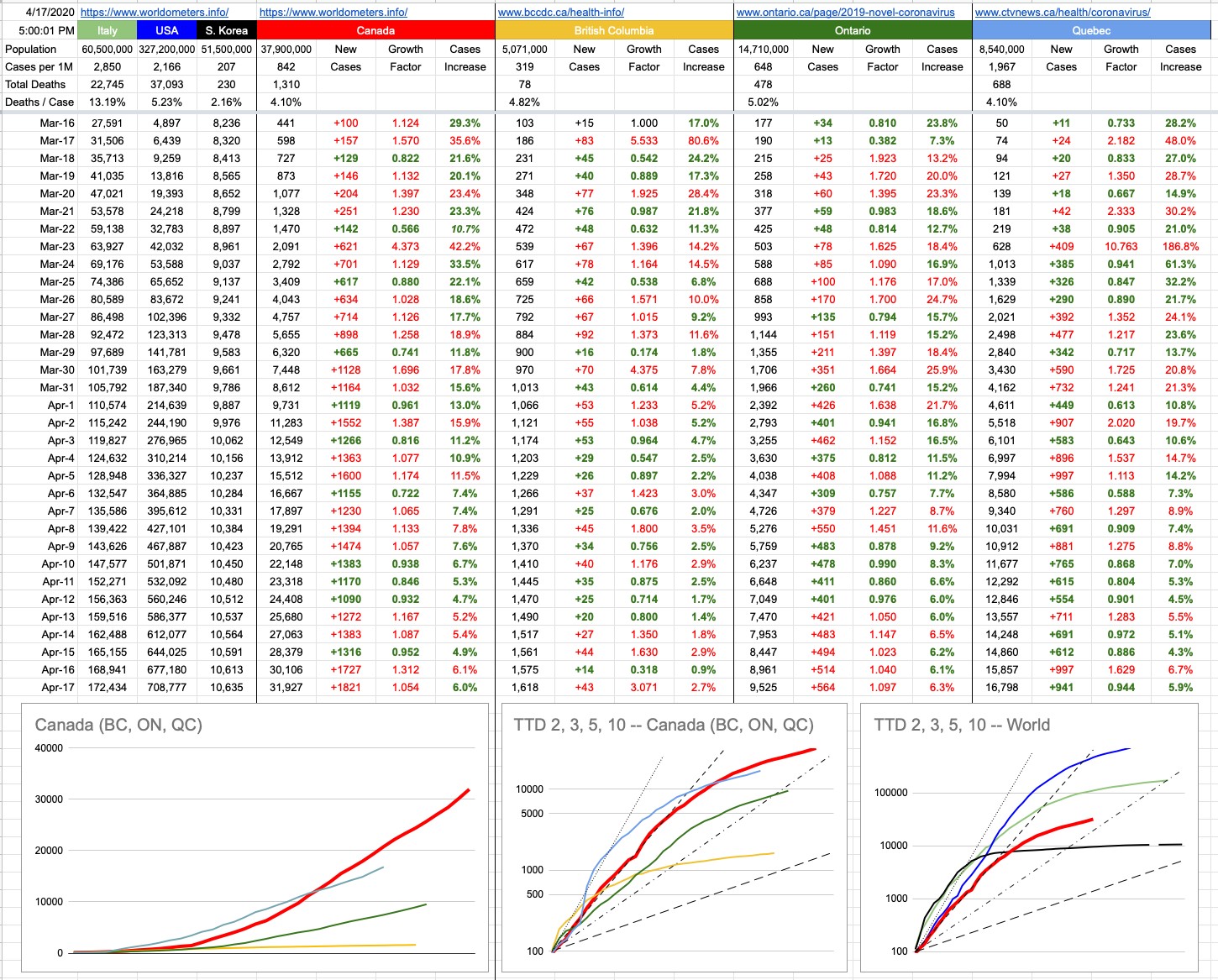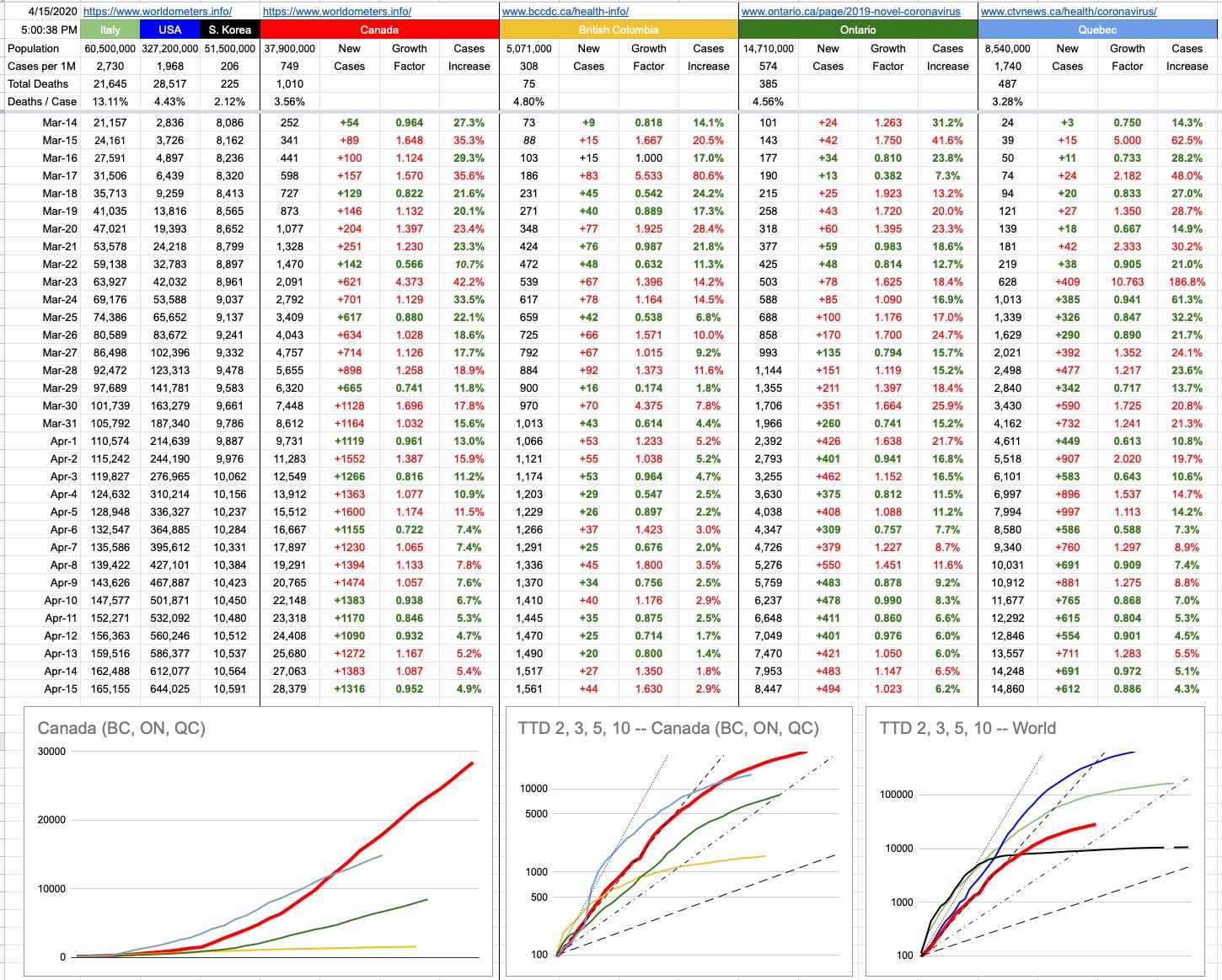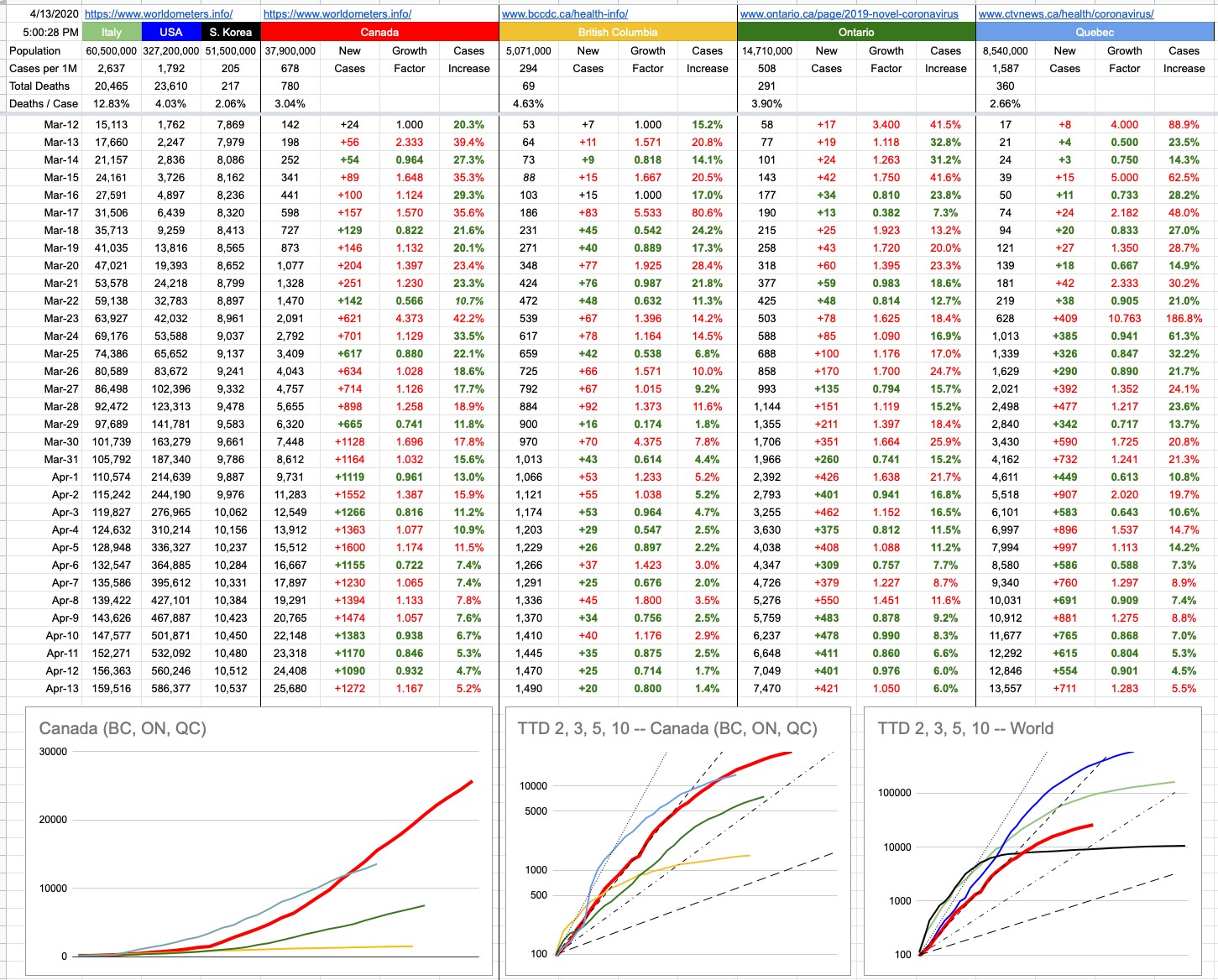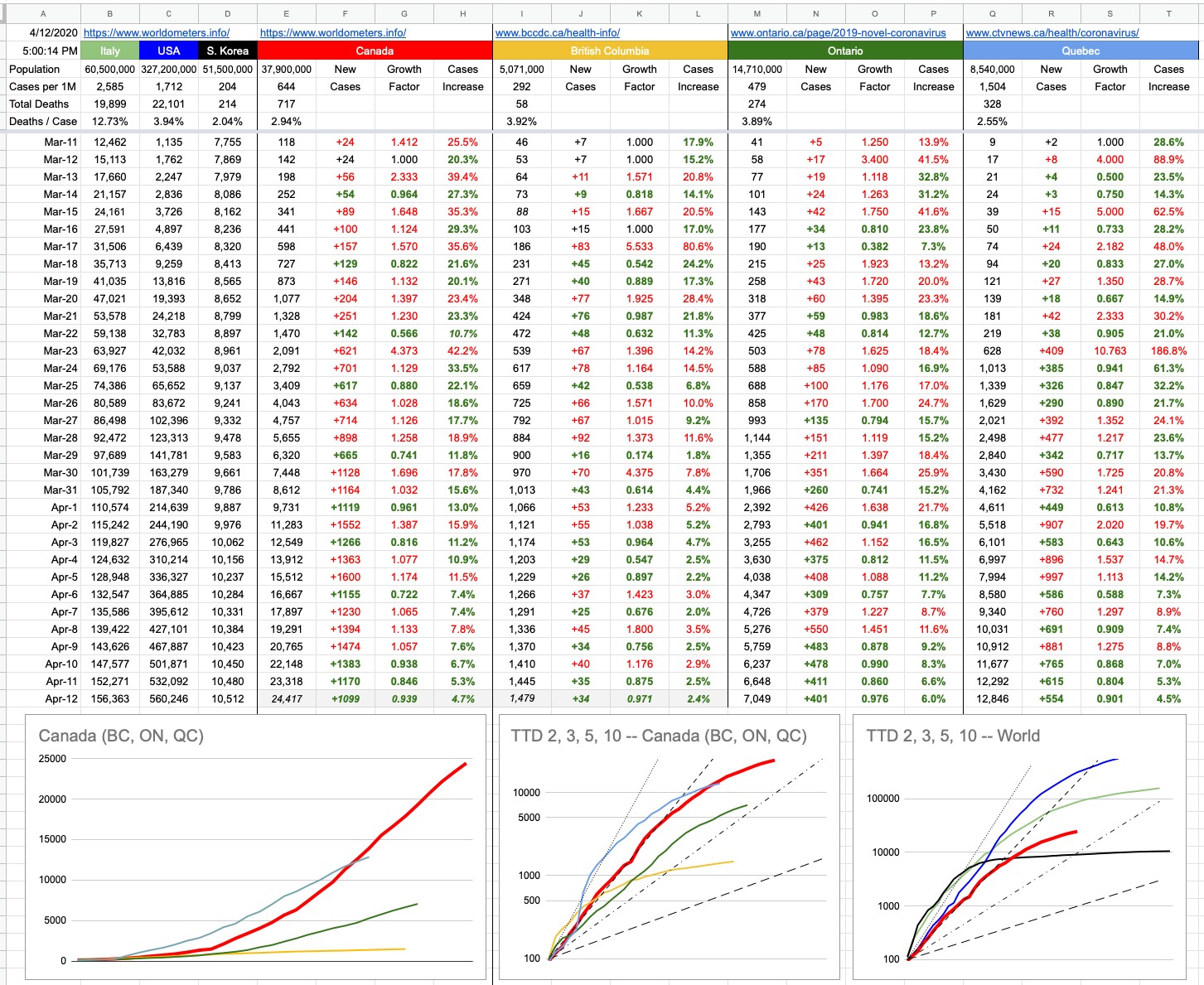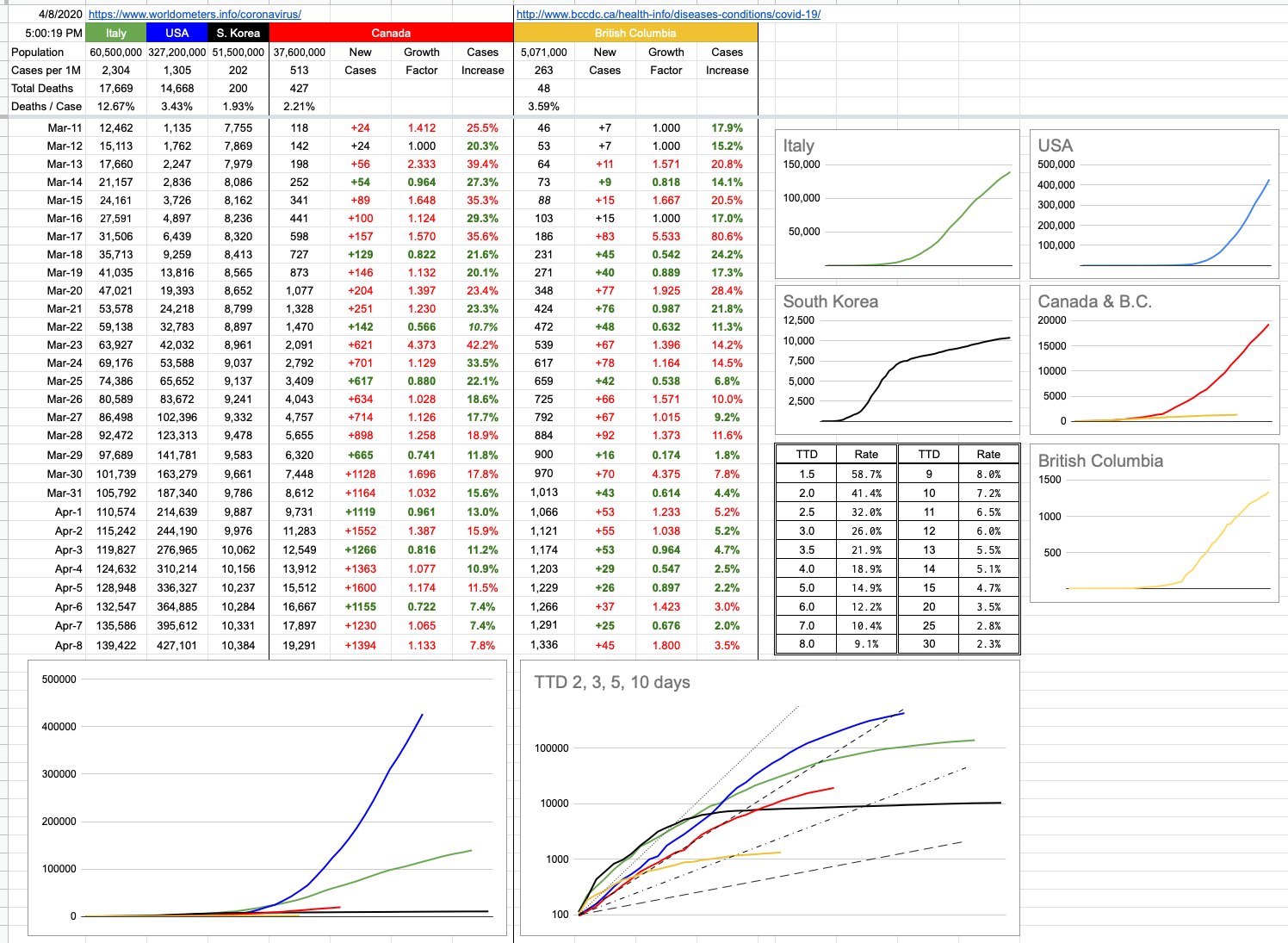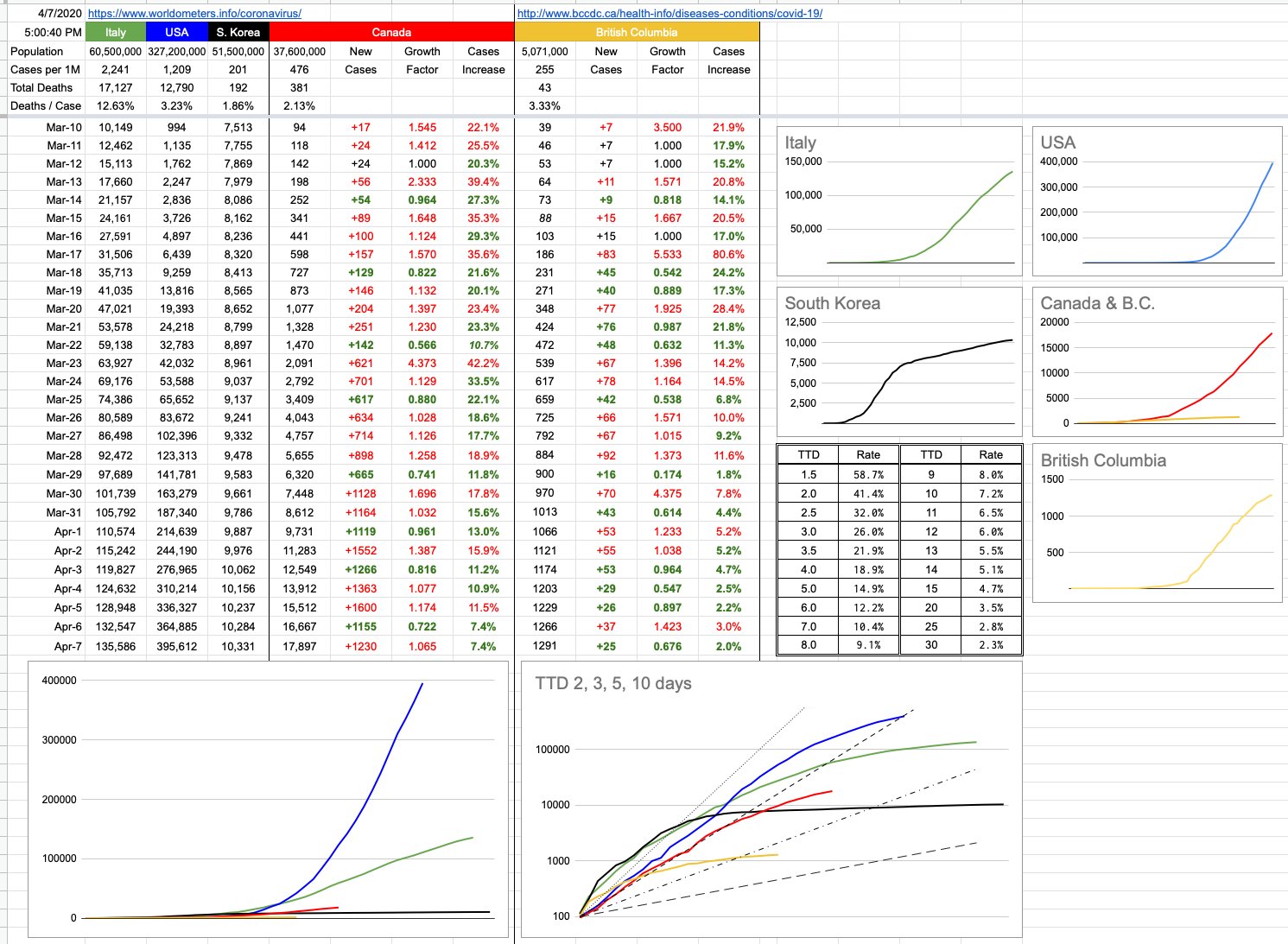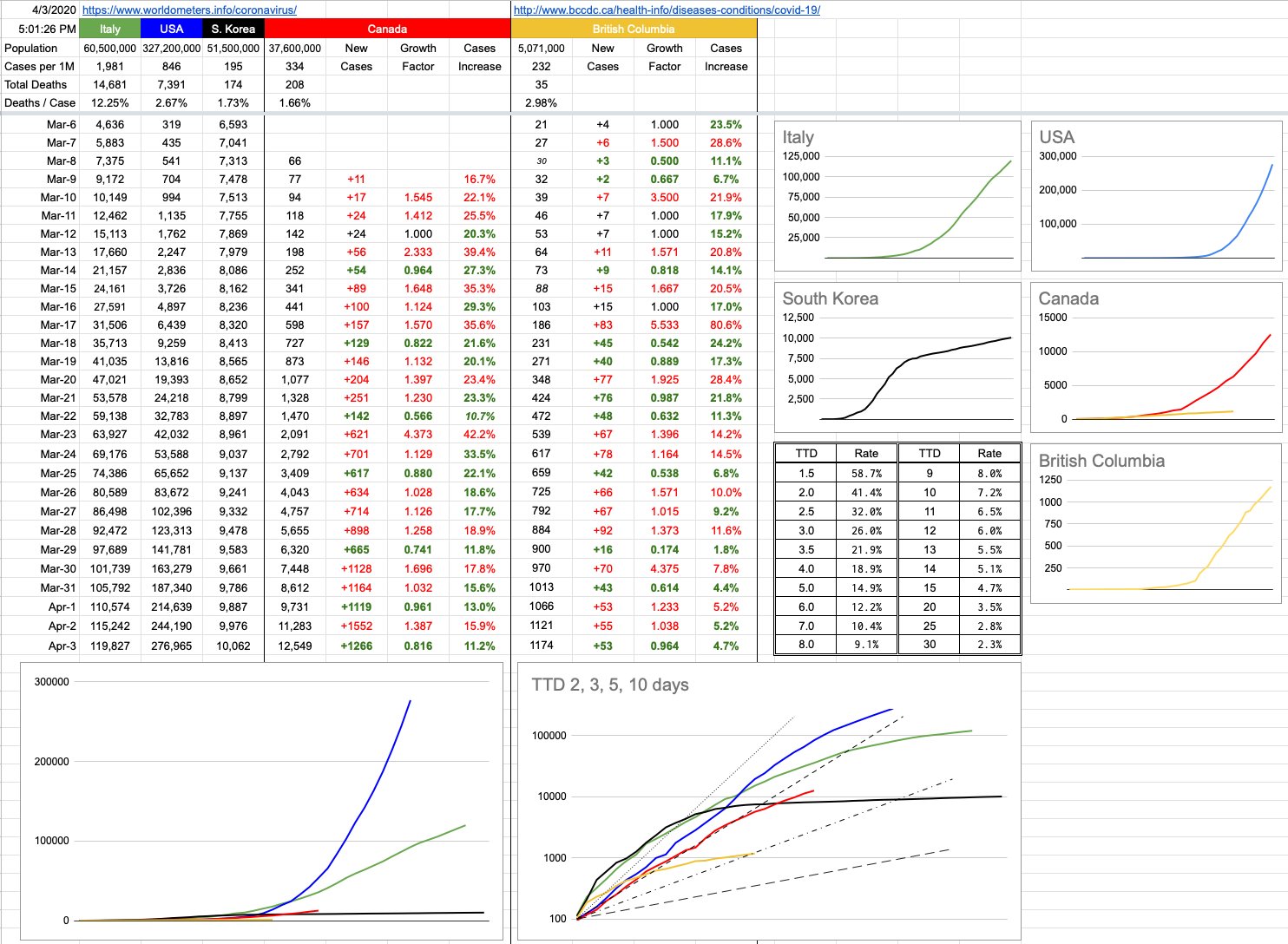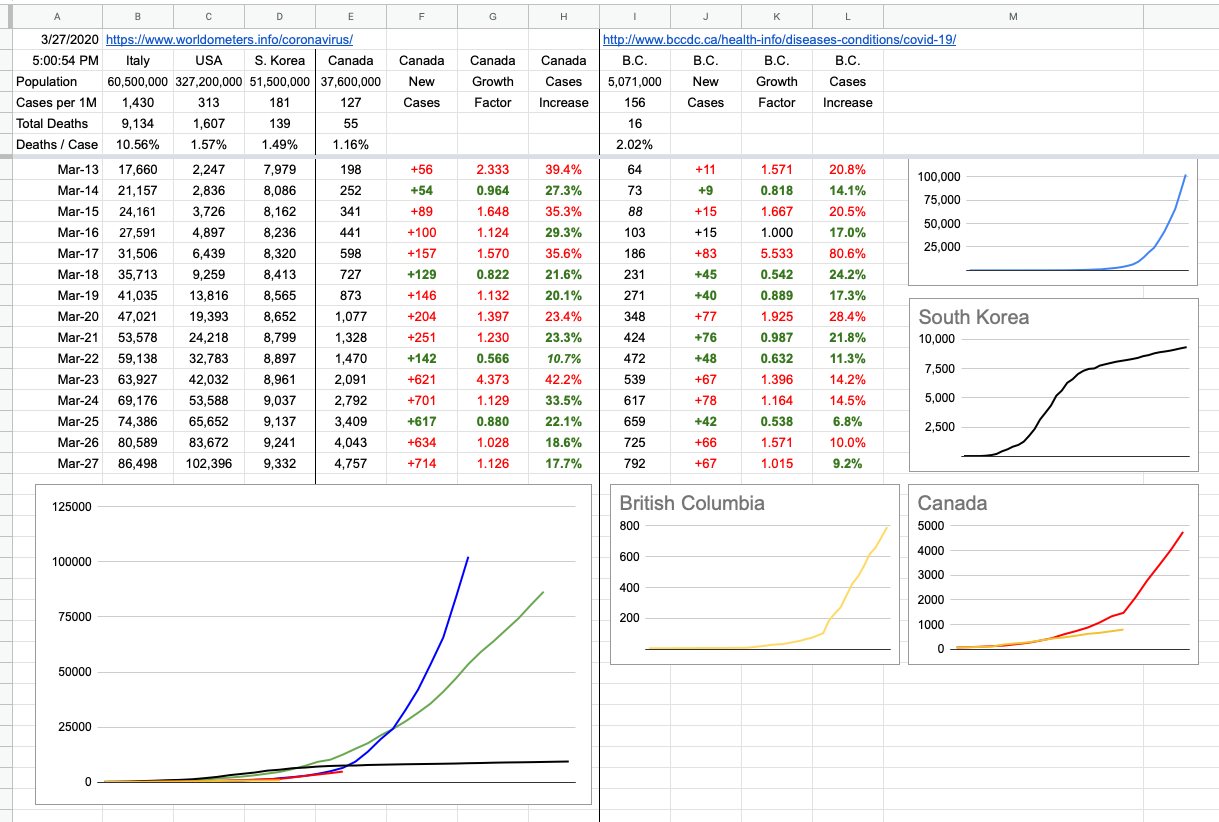Day 34 – April 19, 2020
There’s this old joke where a mathematician, a physicist and a statistician go hunting. They’re crawling around for a while, but suddenly see a deer, way off in the distance. “I got this.”, says the mathematician, and he carefully takes aim and pulls the trigger… but misses about 5 feet to the left. The physicist says, “Not bad… but I got it”. He aims his rifle and fires…and misses, 5 feet to the right. The statistician jumps up excitedly… “We got him!”
This game of analyzing numbers can get very convoluted, because there are always different ways of looking at things, and according to something I briefly mentioned yesterday (confirmation bias), we’re often looking to find and interpret data to fit what we believe… or want to believe.
There’s a big part of me that wants to believe this virus is far more prevalent than has been reported. The implications of that pretty straightforward. At the moment, in Canada, we have around 35,000 confirmed cases. We all know the real number is higher than that, but how much higher, and what does it matter? If the number were 100x, we’d be approaching 10% of the population. If it were 1,000x, we’d be way past the point of herd immunity… the implication would be that we’ve all had it and can pretty much get back to normal, just being extra careful to isolate those who are still at risk, at least until they get it… in whatever form it shows up… knowing full-well the medical system can handle it. We will, in the near future, know exactly what number to attach to that x. Here in B.C., somewhere between 5 and 10 is my guess… which, combined with our effective efforts at flattening the curve, imply we can start along the path of getting back to normal… and the initial easing of restrictions, tentatively scheduled for mid-May, is step one.
There’s a study coming out of Stanford that implies that number may be between 50 and 85. I am suspicious of that number for a few reasons, but we will let the experts sort it out. The sample size and who comprised the test group and a few other things… leads me to think there are a lot of asterisks next to a lot of the findings. I haven’t read the report, but as per above, I hope it’s even a little bit true; the implication that this has been around longer and wider than we think.
That being said, there is no version of reality where this is just like any other seasonal flu. A “bad flu season”, and we’ve had many, does not overrun the medical system like this one has. There is no version of this where “just let it run its course” would make sense. There is a lot of screaming from some people about how we’re destroying our economy and people’s livelihoods for nothing. Well, there will be plenty to learn from all over the world, since there are (unfortunately) jurisdictions that have decided to follow different, less strict routes… some through design (U.K.), some through incompetence (U.S.), and some through sticking their heads in the sand (Sweden). There is a technical/scientific term for when one suddenly realizes the present course of action may not be ideal, and that a drastic course-correction may need to be implanted. It’s called the “Oh… shit” moment.
Two of those jurisdictions have already had their moment. The third is well on its way, and it requires a somewhat different way of thinking about things.
Let’s begin with a bad example of trying to compare apples to apples. What country has the highest confirmed infection rate? Well, it’s the Vatican City… they have a population of 800, and have recorded 8 infections. But 8 out of 800 is the same as 1 out of 100. Which is the same as 10,000 out of a million… which is very, very, high. The U.S. comparative number is 2,300. Canada’s is 922. In fact, given the demographic breakdown of the Vatican population (I’m assuming a disproportionate number of older men)… and the fact that it’s surrounded entirely by Rome, the largest city in Italy (whose comparable number is 3,000), that’s pretty good. To add to the list of interesting but useless numbers, the Vatican has 2.27 Popes per square km.
Part of the challenge of analyzing numbers is being sure you’re comparing apples to apples, and the more I’ve been at this, the more I realize it’s not even apples to oranges… more like apples to bicycles.
Sweden, with a population of 10.2 million, has 14,385 known cases… which equals 879 cases per million… pretty close to Canada. So far so good. Their number of 1,540 confirmed deaths isn’t so great… more than double the U.S, and approaching Italy numbers as a percentage of total population. But not an outlier with respect to other countries. Where things differentiate greatly is the “Resolved” column, and that one is pretty-much apples to apples around the world. No matter how widespread or deficient the testing strategy in any particular jurisdiction, there is a measurable number of test-positive cases, and those cases will resolve: recovered or deceased. This doesn’t have anything to do with assumed cases or Stanford studies. It’s far simpler… at some point, you were tested… and you either recovered or you died. These are the survival rates of identified cases:
Canada: 88.4% (B.C. 92.4%)
United States: 63.6%
South Korea: 97.2%
Spain: 78.4%
Sweden: 26.7%
So what exactly is going on in Sweden? If you look at the distribution of test-positive cases, it’s a pretty standard bell curve. If you look at the distribution of deaths, it’s heavily weighted to older people…. 89% of those deaths are people aged 70 or over. That’s comparable to Canada as well. I think the vast difference may be that a lot of these cases aren’t being identified until they’ve passed away. I’m not sure these cases are entering the system till “after”, and it goes straight into the two stats: positive test plus death. Their medical system is not overwhelmed. It’s a first-world country when it comes to treatment, and they have capacity. So the implication is that the virus is running rampant through the elderly population… and given their strategy, no masks nor gloves nor social distancing (unless you have symptoms) and keeping everything open… this will eventually reach everyone over a certain age. That’s roughly 20% of Sweden’s population, and with a roughly 10% mortality rate for that demographic, that’s more than 200,000 people. That is their trade-off for keeping the economy open.
In Canada, 4 million people are aged 70 or over. So if we did the same here, we’d be looking at roughly 400,000 deaths in that age group alone.
Those are the worst-case scenarios, mitigated by potential treatments, vaccines and changes in policy… but here’s at least one version of an answer to that rhetorical question that’s often getting asked: “What is the trade-off for shutting down our economy?” The answer is… many, many lives.
View Original Post and All Comments on Facebook


